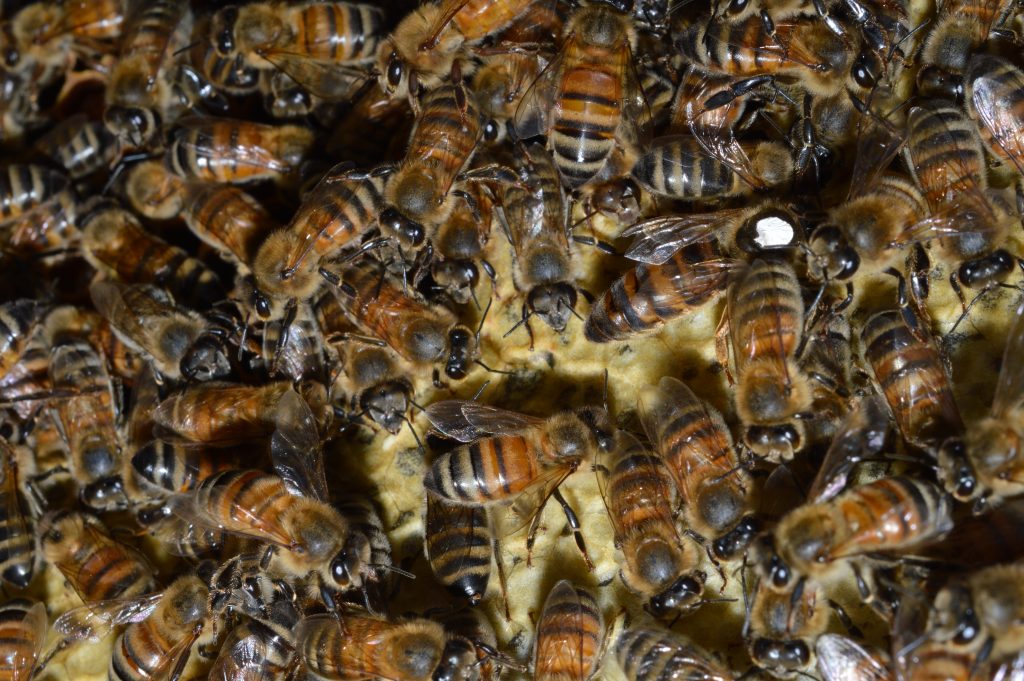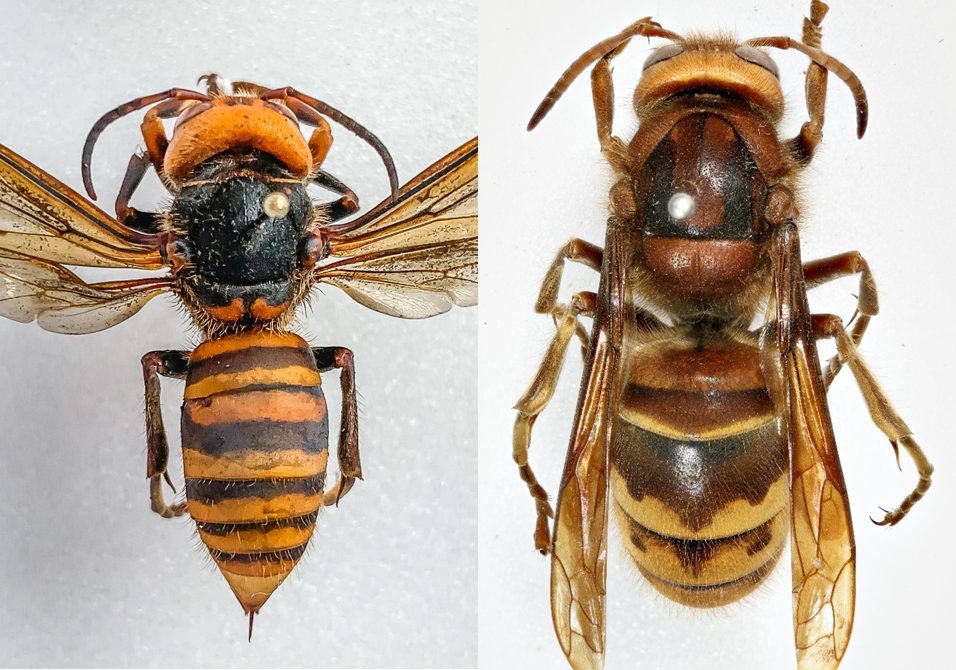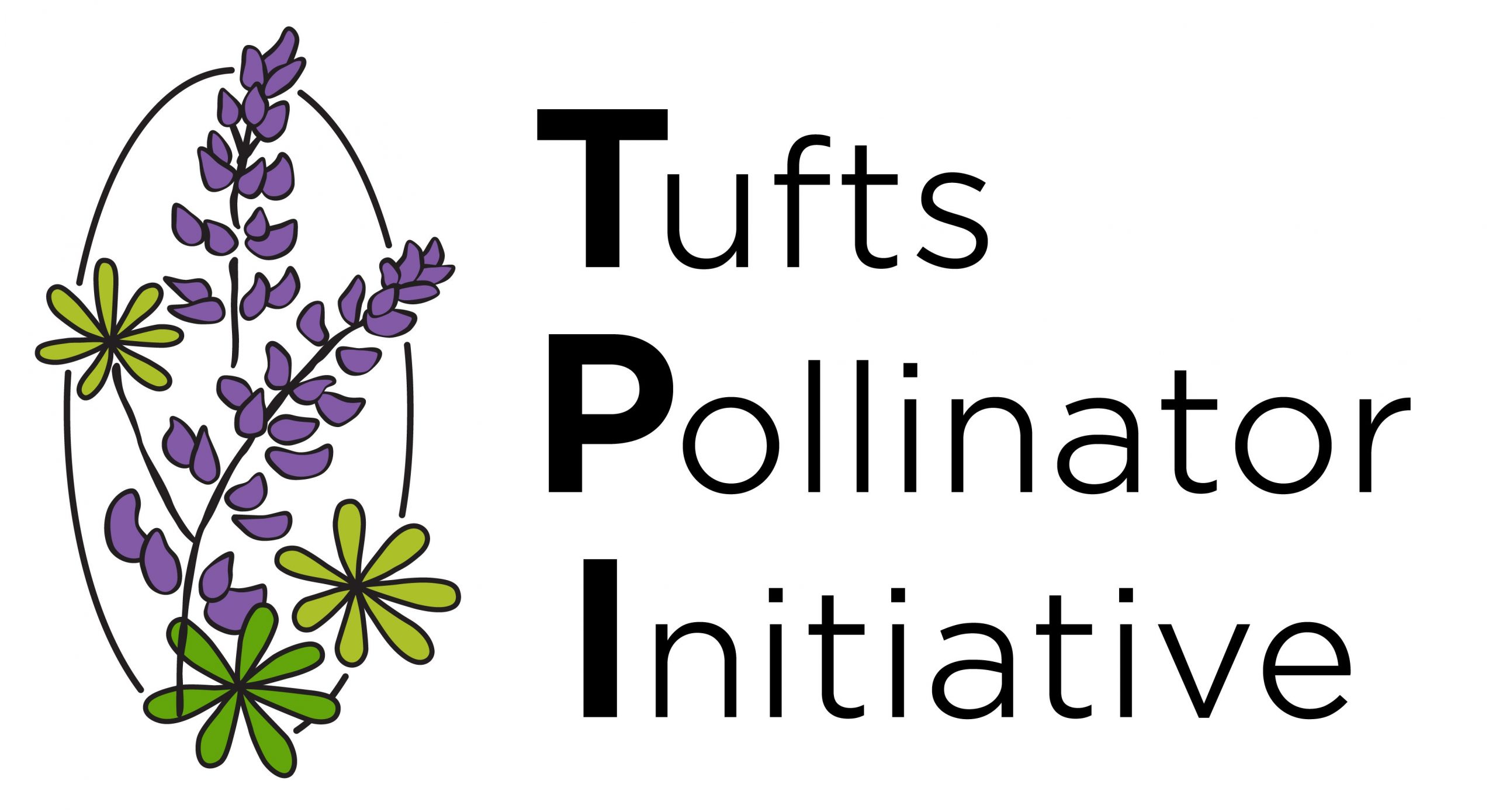Recently, news outlets have been spreading fear of the “murder hornet” invading the United States. To be clear, the “murder hornet”, actually known as the Asian giant hornet (Vespa mandarinia), does not pose a direct threat to humans. While a sting from this hornet may hurt, Asian giant hornets are generally not aggressive unless provoked. Stinging is a form of protection, and like any stinging insect, the Asian giant hornet is not out to sting you.
Instead, Asian giant hornets are after much smaller prey: honey bees. Asian giant hornets are carnivores, meaning they feed insects to their developing young. A honey bee colony, with tens of thousands of bees, is a great place to collect protein-rich food. In one foraging trip, one Asian giant hornet can kill up to 40 honey bees! As you might imagine, a whole colony of these hornets could be fatal to a honey bee colony.
In their native range of eastern and southeastern Asia, Asian giant hornets have been predating on Asian honey bees (Apis cerana) for a long time. In response, Asian honey bees have adapted a defense strategy: heat. When the hornet invader is detected, worker bees sound the alarm by shaking their abdomens. Then, in a swift, coordinated response, hundreds of honey bees swarm the hornet and contract their flight muscles, generating intense heat. Together, the worker bees heat the hornet to about 117 °F, killing the intruder. As it happens, the hornet can only withstand temperatures up to 115 °F, while Asian honey bee workers can withstand temperatures up to 118 °F. Evolution is a beautiful thing.

But, the Western honey bees (Apis mellifera) that are managed in North America have not evolved with this predator and are not as well equipped to defend themselves. This is why we need to be worried about the Asian giant hornet. Managed honey bees provide valuable economic and ecosystem services such as beekeeper livelihoods and agricultural pollination—the Asian giant hornet jeopardizes the security of these services.
While this is certainly cause for concern, panic is unwarranted. Since August 2019, the Asian giant hornet has been spotted just three times in Washington State and three times in British Columbia. Following a recent report of a honey bee colony death that resembled the work of this hornet in Washington (although it is unconfirmed), Washington State Department of Agriculture entomologists are on the hunt to stop the hornet before it spreads.
Fortunately, Asian giant hornets have not been spotted on the east coast, and it would likely take a while for them to get here. As with any introduced species, however, attempts should be made to spot the hornets early on. If you think you have seen an Asian giant hornet in Massachusetts (which is currently highly unlikely) you can report a sighting to the Massachusetts Introduced Pests Outreach Project.
Identifying Asian giant hornets: The European hornet (Vespa crabro) is often confused for the Asian giant hornet. There are three main differences between these hornets:
- Size The Asian giant hornet is slightly bigger than the European hornet (photos not to scale, enlarged for detail).
- Stripes The Asian giant hornet has regular black-orange stripes along its abdomen; the European hornet has irregular brown-yellow stripes.
- Head The Asian giant hornet has an orange head; the European hornet has a golden yellow head.

RIGHT: European hornet, Chris Moody, Flickr
To learn more about the Asian giant hornet, please read this USDA report instead of news articles. To learn more about how you can help mitigate the establishment of introduced species in general, check out these resources:
- U.S. Department of the Interior, Invasive species: finding solutions to stop their spread
- National Park Service, Invasive and non-native species: stop the spread
- The Nature Conservancy, Invasive species: what you can do
- Alliance for the Chesapeake Bay, 10 ways you can prevent the spread of invasive species


Thank you for a very helpful, informative, and easy-to-understand article. I can now see the difference between the two and will feel comfortable knowing what to look for. I hope that we can all be a part of saving our environment!
Thank you for reading! So glad you were able to learn from our post! 🙂
I still feel worried about the fate of our bee populations though due to these things. Asian Honey bees have evolved to overheat these hornets. Our populations of bees I do not believe have such defense mechanisms. With colony collapse disorder already being a significant problem, are you concerned? What steps can people do, particularly in the Pacific Northwest, to protect their bees?
You’re right, European honey bees may not be able to handle the hornet so yes, I would be concerned if the hornet spreads. For now, sightings have been isolated and the Washington State Department of Agriculture (WSDA) is on the hunt so no need to panic. While it is more difficult to manage honey bees than in the past and beekeepers have many factors to to deal with, colony collapse disorder actually has not been reported since 2012. To help bees in general, plant diverse native flowers with diverse bloom times, this ensures bees have food through their active season. The Pollinator Partnership has some great regional pollinator-friendly planting guides. To help with eradicating the hornet, familiarize yourself with what it looks like and if you see it, report it to WSDA: https://www.maps.arcgis.com/apps/GeoForm/index.html?appid=e3720c303c414210967920b07bad13f5
I heard on the news that some people died from the asian giant hornet though because if one stings you it puts out some kind of hormone that alerts their hive and they all swarm you and its impossible to get away unless you have an indoor location you can easily get to.
Is this true?
This is not true! Asian giant hornets are predators of honey bees, not people or pets.
This was very helpful! Thank you
Always someone defending something, no matter how bad it is.
Thank you. The ignorance of people is just spreading fear.
Hi this morning in First Avenue in Scituate MA saw what, according to pictures, appears to be an Asian Hornet – it was well over 1 inch. It flew away when I stopped my bike and stepped away. Maybe it’s a Euro hornet . Either way they are not supposed to be here and this thing was BIG. Hopefully someone who knows better can check it out
Thanks for your inquiry. It’s likely an eastern cicada killer wasp. Check out our new blog post to learn more about these fascinating creatures: https://sites.tufts.edu/pollinators/2020/08/no-you-didnt-just-find-a-murder-hornet/
I’m finding huge hornets in Norfolk, Ma- I’m killing and bagging them for ID
The asian giant hornet is not on the east coast. Photos are sufficient for identification, if you’re curious, and can be sent to us at tuftspollinators@gmail.com for ID.
We have European Hornets and cicada killers on our property in east ga east of Athens ga. When flying they are hard to tell apart but once they land you can definitely tell the difference. A lot of people who see either think they are Asian Hornets. I’m not 100% positive but I dont think we have Asian Hornets here yet. I do worry about the honey bee population here if Asian Hornets get here or are here.
I was so confused when they started calling Asian Hornets murder Hornets. Thank you for the information on Asian Hornets.
Our pleasure! And you’re right, there are no Asian giant hornets on the east coast. We’re glad you found our blog post helpful.
Thank you but we still have to be on the lookout for Asian giant hornets; though this post calmed me a little. Bye !
Thanks for this informative article!! I’ve seen the European Hornets in Ga. Those jokers look like a yellow jackets on steroids!!
They’re called murder hornets not because they’ll kill you. They’re called murder hornets because just a few of them can wipe out an entire hive in a matter of a couple hours.